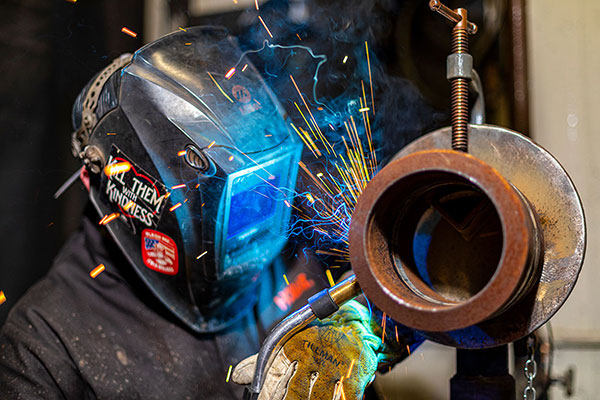Hiring the wrong construction labor can negatively impact project outcomes. Here’s how to stack the deck in your favor.
From rising costs of materials to scheduling issues, many factors impact construction outcomes and result in cost overruns. A recent study finds that 98% of large construction projects result in budget overages of more than 30%.1 While some issues, like weather delays, are unpredictable, others are controllable and can greatly impact profit margins.
Finding the right labor for your project can play a major role in saving time and money. But given continuing labor shortages, that may seem like an impossible task.
Here are ways labor impacts construction outcomes and how you can stack the ‘worker’ deck in your favor.

No matter how severe, crew mistakes can cost millions in extensive repairs, project delays and company reputation. Rework due to errors can account for 4-6% of total project costs, eating away at the bottom line.2 Skilled labor plays a major role in reducing job site mistakes, but 56% of construction managers today report that workers lack adequate skills.3
Proper training can have an immediate impact on reducing errors. Construction teams should conduct a SWOT analysis to determine skills gaps and plan training programs around those areas. Organizations like The National Center for Construction Education and Research can help build a framework for certifications and training in an array of construction trades. Remember, training is not a one-off event but requires a commitment to providing appropriate ongoing workshops and certifications that invest workers in their own well-being and that of their crew members.
Hiring apprentices from strong training programs in any trade is also a smart solution. For example, Steamfitters Local 601 in Milwaukee, Wisconsin offers a 5-year paid apprenticeship that provides classroom and real-world experience in specialties like HVAC/Mechanical and Pipe Fabrication. Programs like this throughout the U.S. are easy to locate and provide a dependable and well-trained workforce that’s ready to work.
Even more troubling than equipment failures or delays, construction mistakes can lead to injuries or fatalities primarily due to slips, trips and falls.4 Ensuring workers are equipped with OSHA 30 and other safety certifications pays dividends. For every dollar invested in construction safety programs, OSHA studies find there is an average ROI of $5 as illnesses, injuries and fatalities decline. Yet surprisingly, U.S. construction firms spend 3.6.% of their budgets on dealing with injuries but only 2.5% on safety training.5
Safety also involves workers’ health and wellness, which has never been more important. Today, 15% of construction workers in the United States have a substance abuse disorder6 and the industry has one of the highest rates of suicide. To create a safer environment, construction firms need to increase awareness of these issues and provide appropriate mental health resources.
A big pain point is investing time to train workers only to have them quit months later. Projects that are short on labor are twice as likely to have at least a 10% cost overrun and schedule slip.7 Managing this issue means not only looking at fair wages but also how to improve benefits to attract and retain labor. A recent study shows that turnover rates are one-third less likely for union over open shop workers – for all types of trade specialties from pipefitters to steel, electrical and civil engineers. That may be because union labor earns wages 9.7% higher than open shop labor.8
Productivity is the key to keeping any project on track, whether managing work off or on-site. Construction firms are losing as much as $40 billion due to labor inefficiencies. 9 One of the fastest ways to turn around productivity is through better communication. Establish a communication chain of command that will help ensure problems are addressed as they arise. Use construction management software that typically features collaborative features which advance effective communications. Set up daily or weekly meetings with field workers and subcontractors to discuss progress and wins and navigate challenges together with established deadlines.
Construction firms that focus on pinpointing and addressing needed areas of skills development, communications and safety training, can significantly improve their chances of recruiting and keeping highly qualified labor for their upcoming projects.

Jason Litkowiec is an industrial division project manager for Grunau Company in Milwaukee, Wisconsin.
1 https://gobridgit.com/blog/8-top-challenges-in-construction-industry/
2 https://mycomply.net/info/blog/cost-of-rework-in-construction/
3 https://www.uschamber.com/economy/us-chamber-commercial-construction-index-q4-2021#:~:text=Two-thirds%20(66%25)%20of,from%2044%25%20in%20Q3).
4 https://www.bls.gov/opub/ted/2022/a-look-at-falls-slips-and-trips-in-the-construction-industry.htm
5 https://www.autodesk.com/blogs/construction/construction-safety-statistics/
6 https://americanaddictioncenters.org/workforce-addiction/blue-collar/construction-workers
7 https://www.mcaa.org/wp-content/uploads/2023/01/IPA-Study-Quantifying-the-Value-of-Union-Labor-in-Construction-Projects-FINAL.pdf
8 https://www.mcaa.org/wp-content/uploads/2023/01/IPA-Study-Quantifying-the-Value-of-Union-Labor-in-Construction-Projects-FINAL.pdf
9 https://www.constructiondive.com/news/construction-wastes-billions-labor-lean-planning/696421/#:~:text=About%20half%20of%20contractors%20see,see%20relief%20through%20lean%20practices
In this episode, I sat down with Beejan Giga, Director | Partner and Caleb Emerson, Senior Results Manager at Carpedia International. We discussed the insights behind their recent Industry Today article, “Thinking Three Moves Ahead” and together we explored how manufacturers can plan more strategically, align with their suppliers, and build the operational discipline needed to support intentional, sustainable growth. It was a conversation packed with practical perspectives on navigating a fast-changing industry landscape.